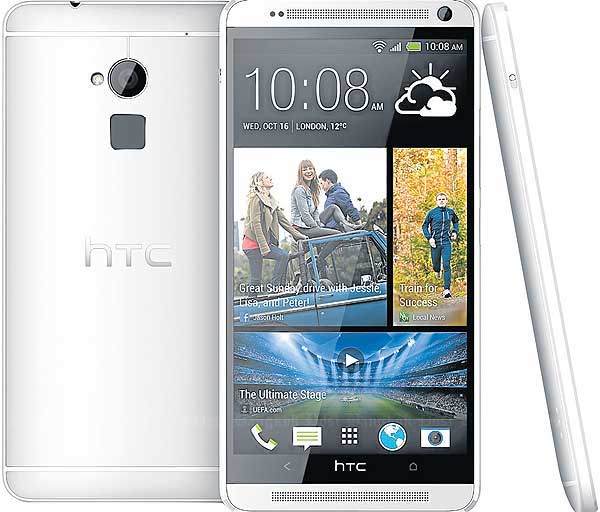
Does HTC's One Max compete with the best phablets on the market?
Defined as a smartphone with a screen between five to eight inches in length, the phablet is becoming popular among older people and those whose eyesight makes peering at small screens a major strain. They are also favoured by people who don't want to carry two devices, a phone and a tablet, around all time.
HTC is entering the phablet arena to compete with strong rivals such as Samsung's Galaxy Note 3 and Sony's Z Ultra. In doing so, the firm has taken the much-praised HTC One, supersized the screen and given it the name One Max.
Most of the specifications (CPU, RAM, camera and operating system) are the same as in last year's HTC One. Don't get me wrong, though, these are still powerful specs. Its performance has been awarded 1877 by Geekbench and 25942 by Antutu. Those high scores are a guarantee that you won't encounter any lags when using the new device, although it should be noted that both the Note 3 and Z Ultra scored higher.
With the 5.9-inch Full HD display, the One Max offers fantastic clarity thanks to the pixels having more space to roam. Movies and TV shows look amazing. Combined with Boomsound, delivered via two front-facing speakers, this makes for an excellent mobile entertainment gadget.
Removing an optical image stabilisation feature from the One Max wasn't a good move, though. The HTC Ultrapixel camera suffers from blurriness; things get worse if you try to take photos in low-light situations.
One of the big features on the One Max is the addition of a fingerprint scanner although the implementation is very different to that on Apple devices. While the iPhone 5s can use your fingerprint to purchase content (such as a password), with One Max, you can program it to launch an app, for instance, opening a camera app with your index finger (but you'll need to remember which finger is linked to which action). But the scanner mechanism is in a really irritating place on the phone. Olau, it's exactly where your index finger might rest, but it's on the back of the device which, of course, you can't see. I accidentally disabled my One Max and it took several swipes to get it to unlocked, which I found infuriating. Compare this to Apple's iPhone 5S, where the scanner has been put into the home button, and you can see that these two devices are worlds apart in terms of biometrics. Note: On the Max One when you lay down your phone on the table, you can't use your finger to unlock it.

The larger size also seems to affect the balance of the phone. It doesn't have the all-in-one feel that the HTC One was so praised for (thanks to it being made from a single piece of aluminium). Another problem is that the back cover (which pops off if you hit a small switch in the top right-hand corner) doesn't sit very well on the back of the phone, meaning it's difficult to pop it back into place after you remove it. Having a back cover doesn't mean that the battery is removable, which is very disappointing; it's intended to provide access to the Sim card and microSD.
The HTC One left out the MicroSD slot due to its design. One Max gives you the slot, but reduces its internal storage from 32 to 16GB which means that after paying the high cost of this phablet, you have to shell out extra for the card. This device also seems to have been designed to serve a single purpose: to give those who liked the HTC One a bigger screen to play with. That doesn't mean that the One Max is a terrible phone, since it still has all the features that I loved on the One.
The Samsung Galaxy Note 3 at least came with an S Pen, which made it different from the S4. And the Sony Z Ultra allows users to jot down notes with their pencil, a feature that sets it apart from the Z1 model.
Let's hope that, soon HTC will be able to impress me again like it did with the HTC One, a phone with a design and features to brag about. The One Max is a great entertainment device but, sadly, not a great phablet.
comments powered by Disqus

